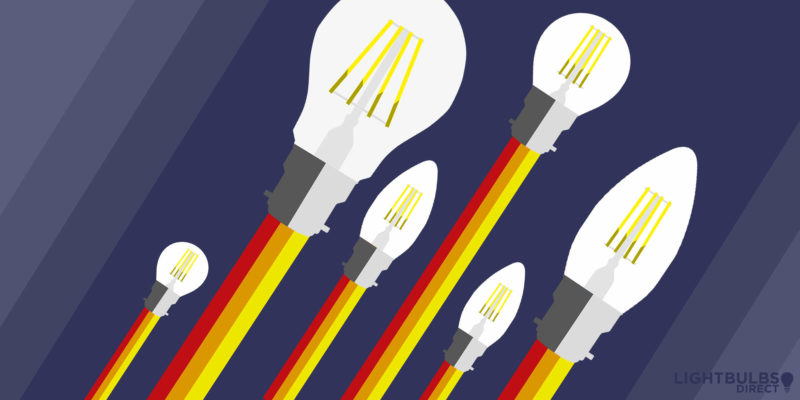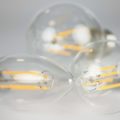After dominating the lighting market for more than a century, Edison’s incandescent light bulb is now being replaced by a whole host of new technologies. The latest of these, LED light bulbs have received a vast amount of media attention, and with good reason. Check out our most popular LED ranges below.
Here are a few things to consider when choosing LED light bulbs…
Efficiency
Manufacturer’s claims vary wildly about the efficiency of LED light bulbs (Light Emitting Diode) and can often be quite misleading. The simplest way to ensure that you are comparing “like with like” is to look at the efficiency in Lumens per Watt. That is, how much light do you get for each Watt of electricity used.
When LED light bulbs first appeared, their efficiency varied between 20 and 50 Lumens per Watt. Today (early 2020), LED light bulbs that are in-production range in efficiency from about around 80 to 110 Lumens per Watt. This compares with around 10-15 Lumens per Watt for old-fashioned incandescent lamps and 50-100 Lumens per Watt for fluorescent tubes.
Read our article about explaining lumens.
Colour Temperature
Early LED light bulbs were mostly a very much higher colour temperature (ie a bluish light) than the typical 2700K colour temperature of a warm white incandescent lamp. This has led many people to think that LED light bulbs gave a “cold” light.
LED technology has however advanced a great deal in the last couple of years and some types of LED are available in a range of colour temperatures from warm white (2700 or 3000K) up to daylight (6000K and beyond). LED light bulbs with a higher colour temperature do however tend to be slightly more efficient than those with a lower colour temperature so some companies offer these as a way of making their products seem brighter. To replace standard incandescent or halogen lamps, a colour temperature of around 2700K to 3300K is preferred, however in environments such as kitchens and bathrooms, a cleaner cool white colour (around 4000K) is often required.
Some companies use non-standard terms when describing the colour of LED light bulbs such as “natural white” or “office white” which cannot be readily compared with other products. To ensure that you are comparing like with like always check the colour temperature.
Read here for a detailed explanation of colour temperature.
Colour Rendering
The colour rendering of LED light bulbs varies quite markedly between brands. For some applications, this is not particularly important, but for ambient lighting, it is important to check the quality of light emitted.
The LED light bulbs that we offer for ambient lighting all have good colour rendering, comparable to that of a good quality fluorescent tube. Many manufacturers do not, however, quote a colour rendering index for their LED light bulbs so we are rarely able to quote specific figures.
Heat Output
LED light bulbs give off relatively little heat but do run reasonably warm and often incorporate a heat sink to dissipate any excess heat and maintain the LED light bulbs at optimum operating temperature. Compact lamps such as miniature spotlights can thus still get reasonably warm whereas larger light bulbs and candles are certainly cool enough to touch when operating.
Rated Life
The one area where LED light bulbs score highly is in their rated operating life which typically ranges from 10,000 to 50,000 hours. This is 10 to 50 times longer than a typical incandescent lamp so LED light bulbs are ideal for use in areas where maintenance is difficult or long life is important.
You can follow our link to view our entire range of LED light bulbs.




